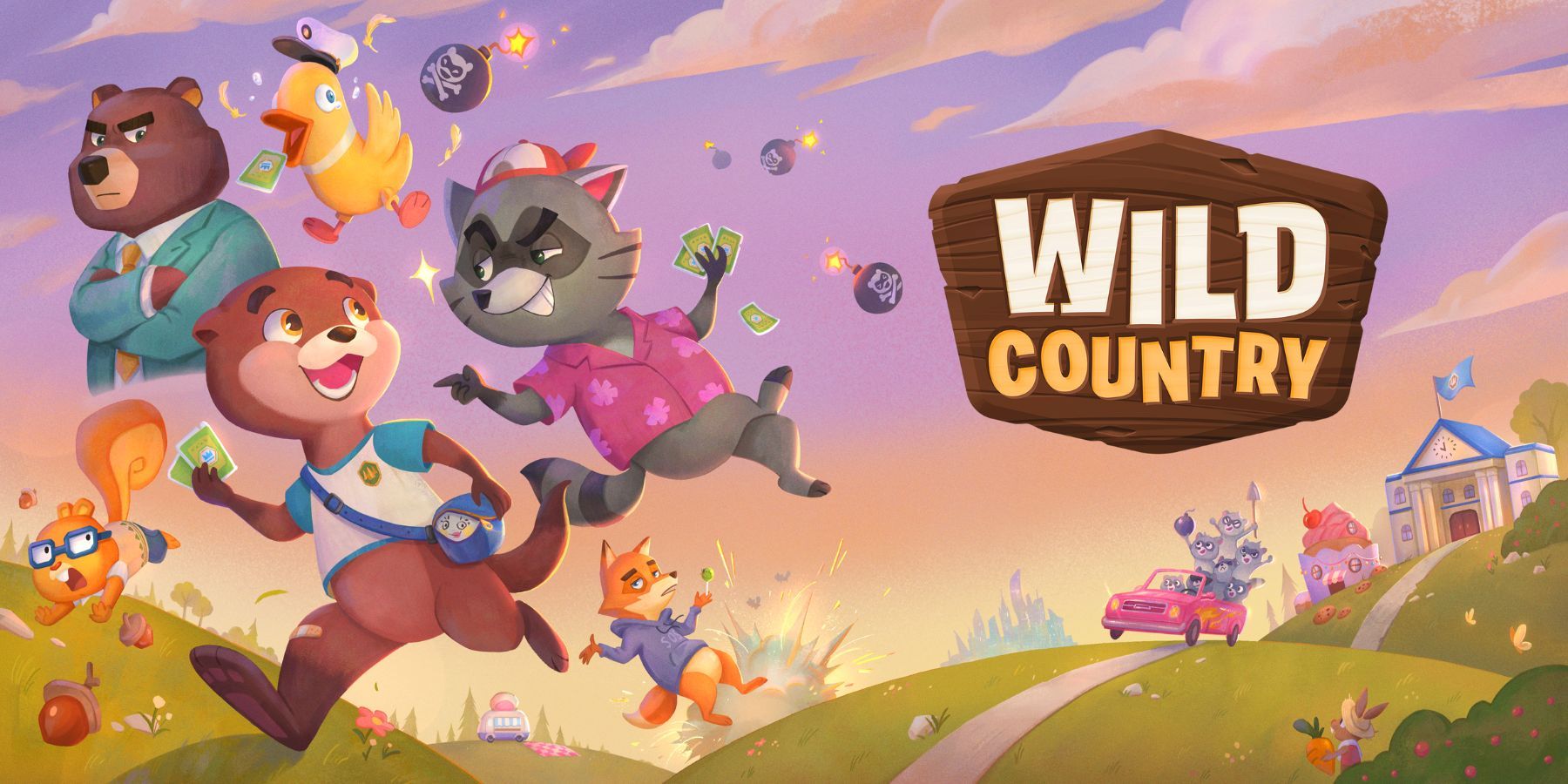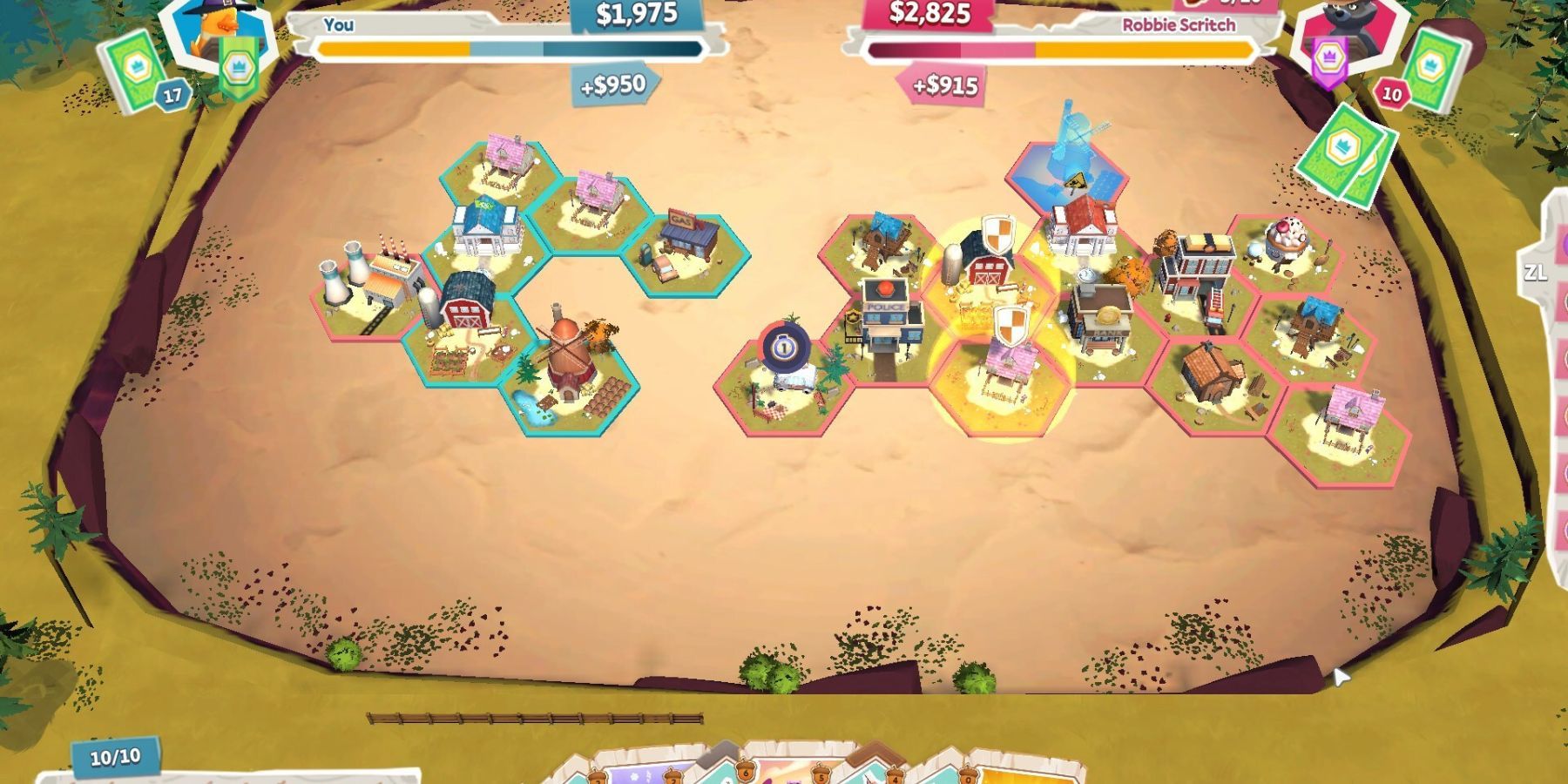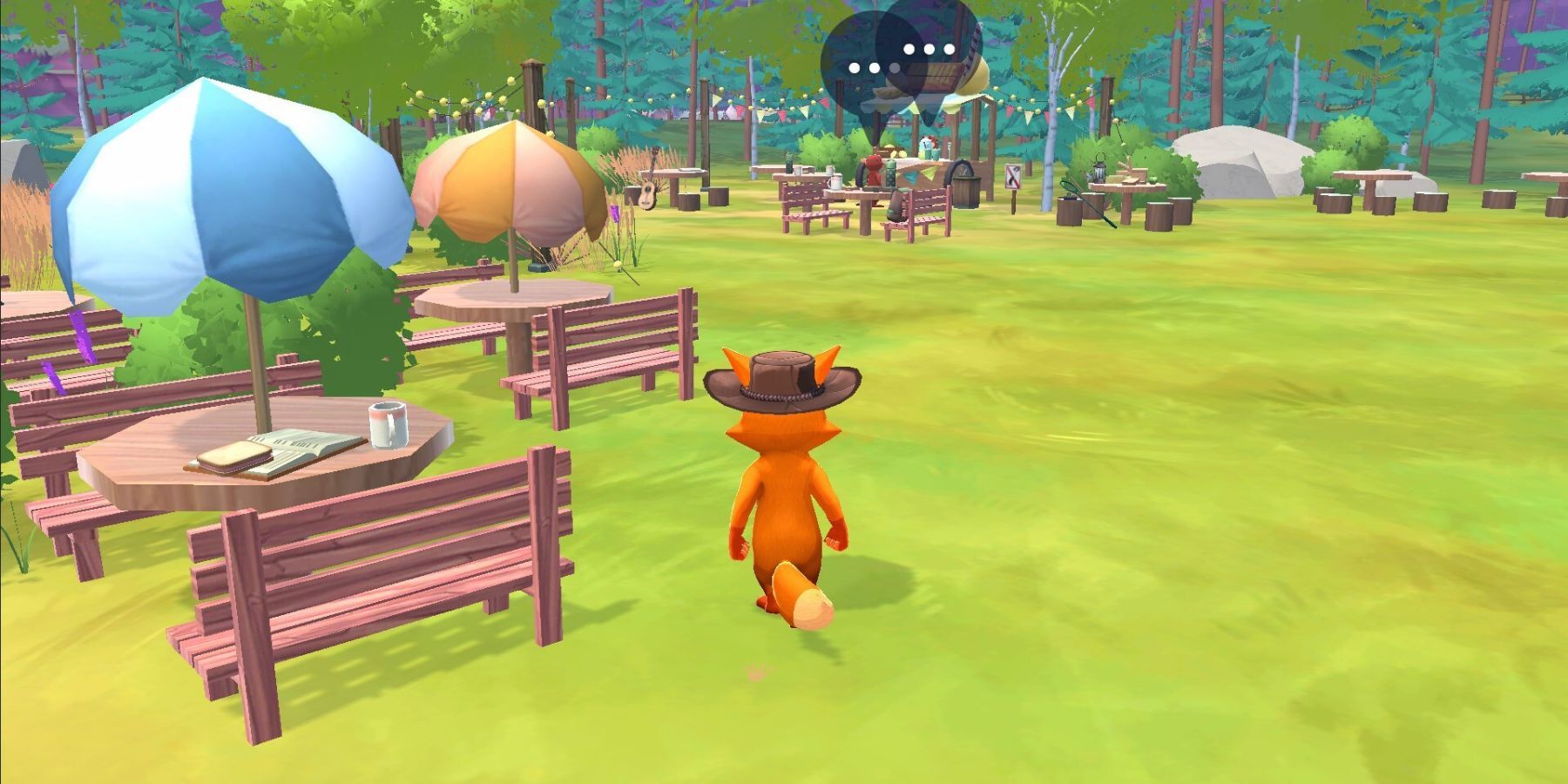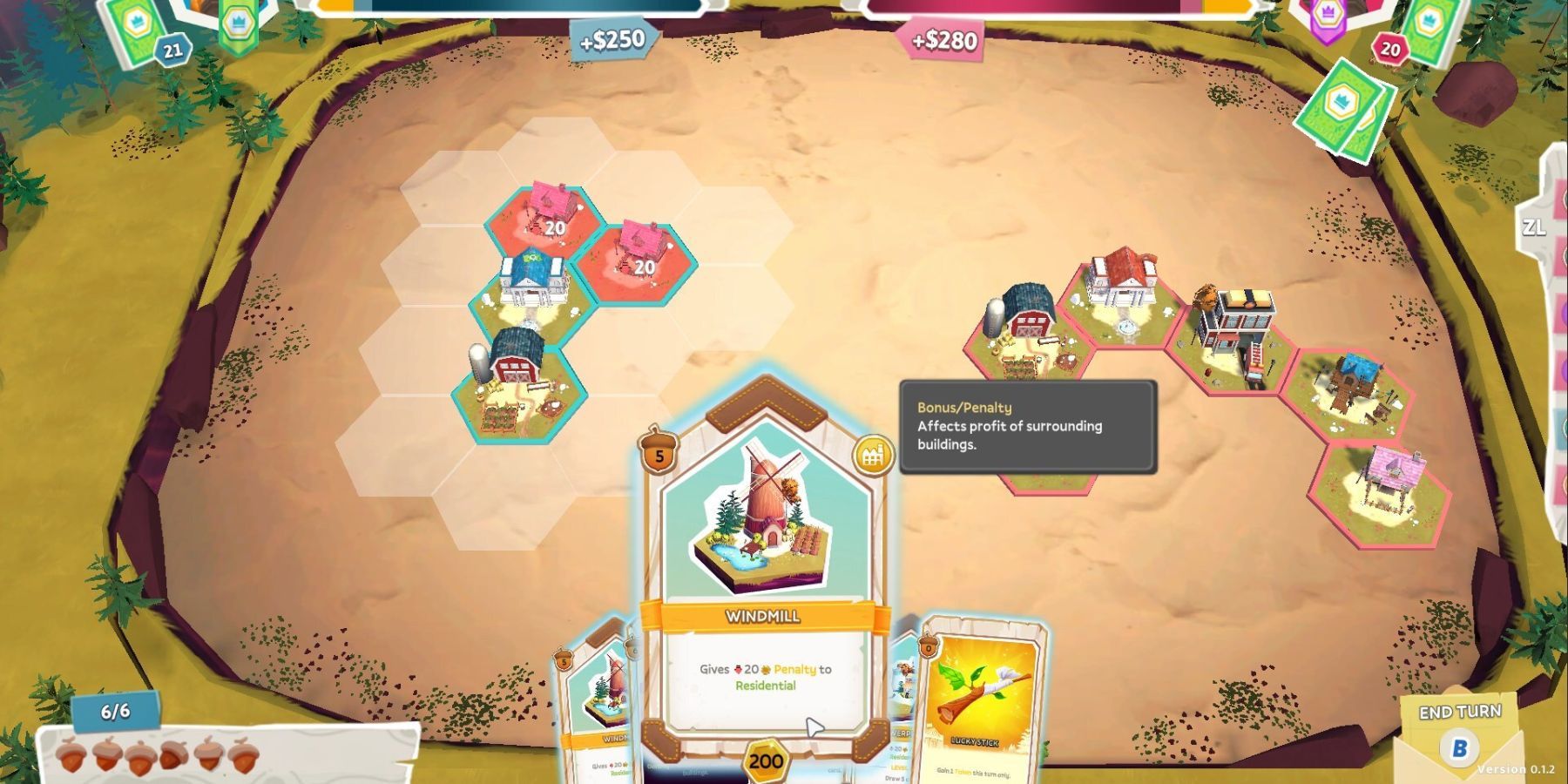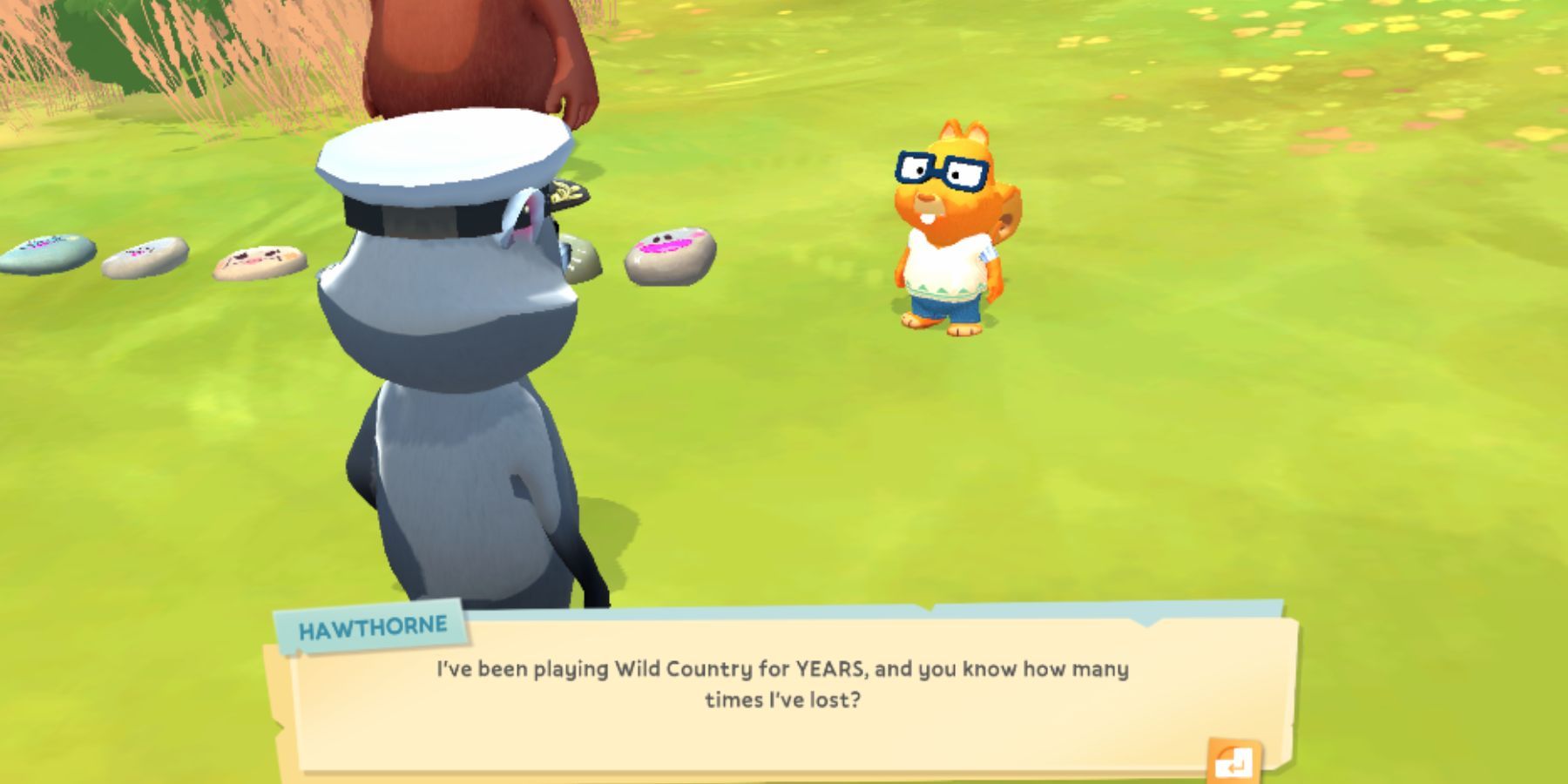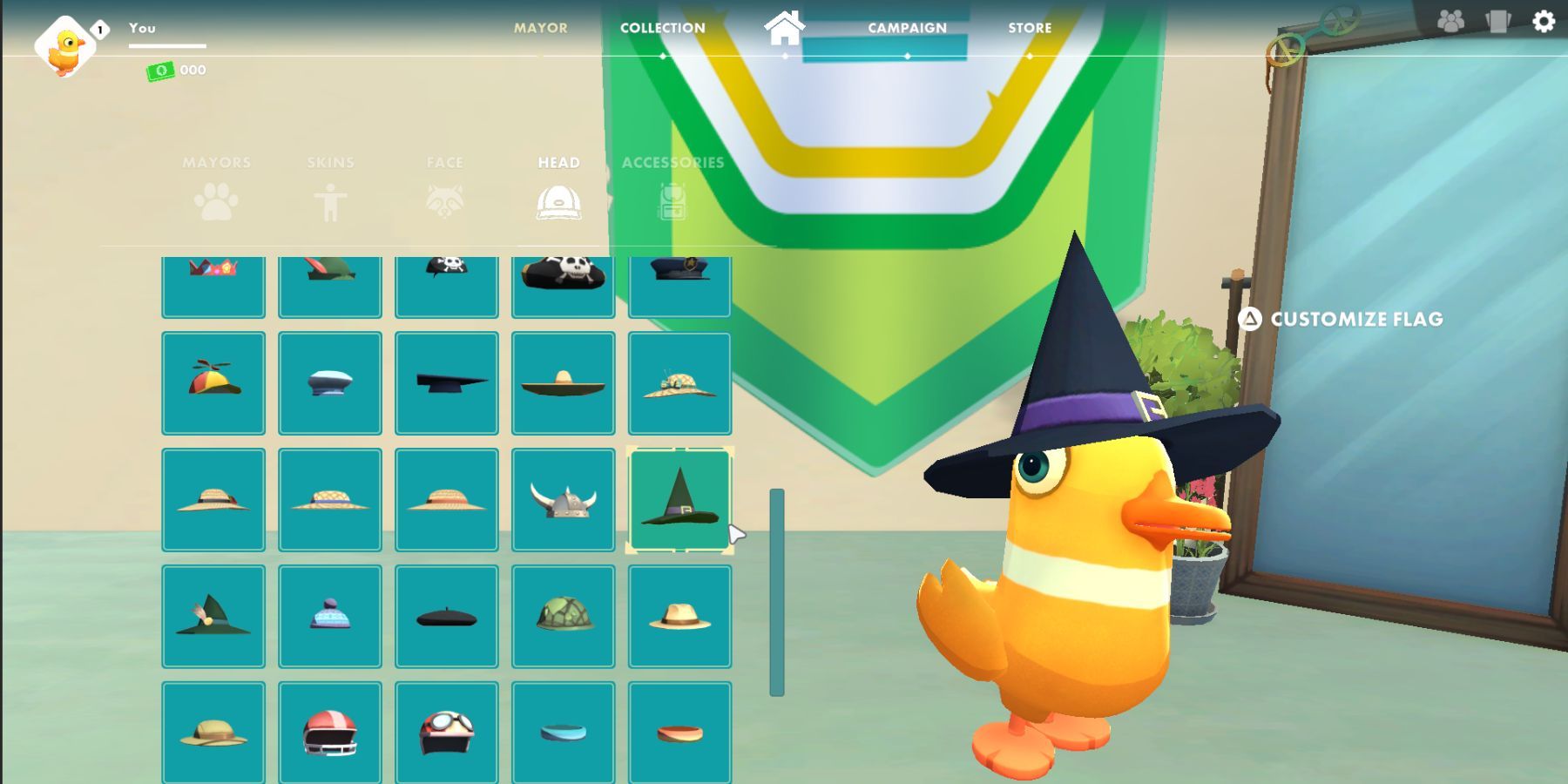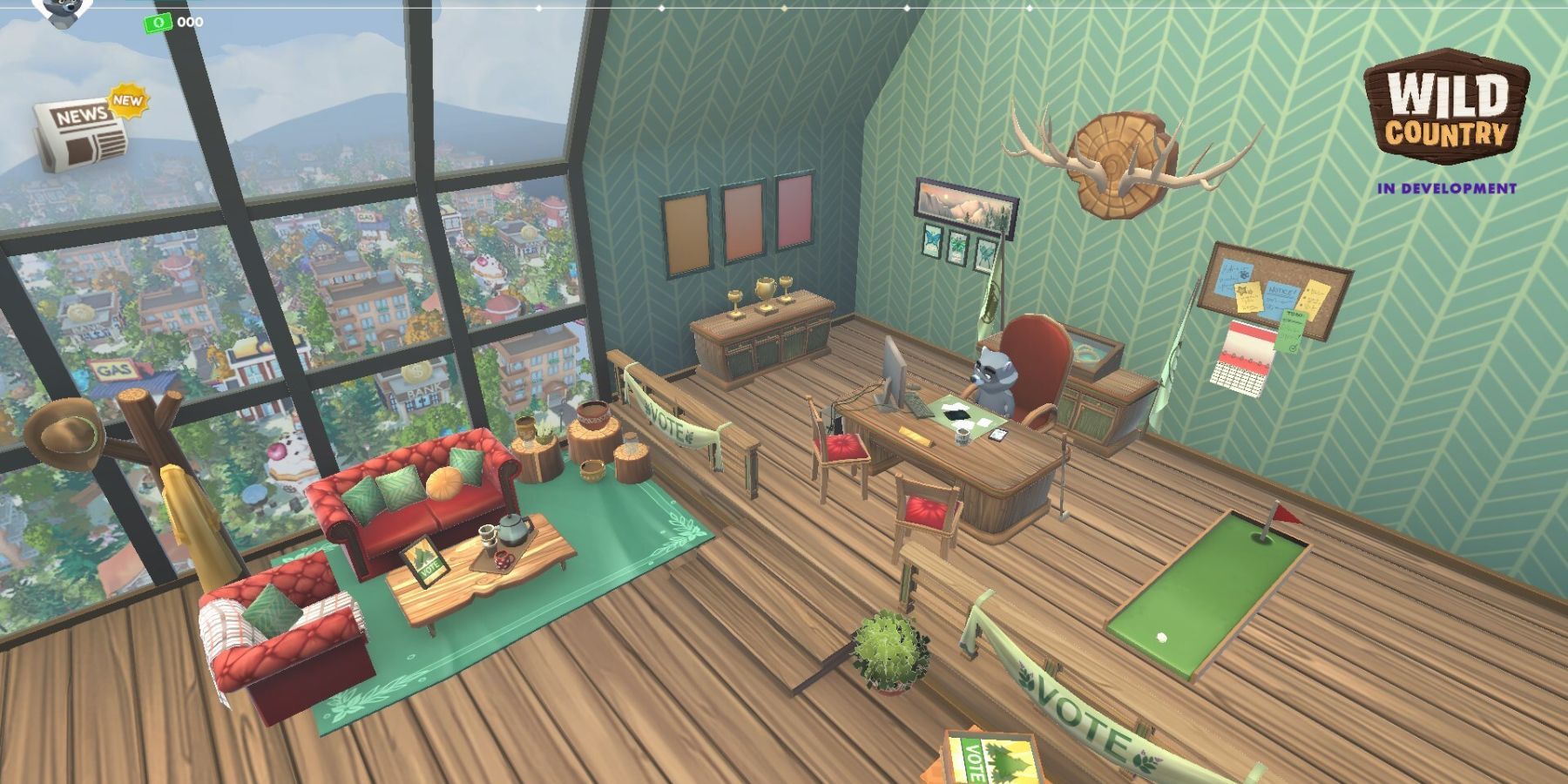
Wild Country: CEO Shares Insights on Bridging the Gap Between Hardcore Card Games and New Players

Wild Country's CEO discusses their mission to revolutionize collectible card games, bringing a cozy city-building twist to the genre Discover how they are making hardcore card games more accessible and enjoyable for a wider audience
Collectible card games, commonly known as CCGs, often have a reputation for complex gameplay mechanics, making it difficult for some players to grasp the systems and conventions. However, Wild Country is a unique CCG that breaks away from this trend by offering a cozy and user-friendly city-building card game experience. It aims to appeal to both experienced players of the genre and newcomers alike. Recently, our website interviewed Becky Matthew, the CEO, Co-Founder, and Design Director at Lost Native, the studio behind Wild Country. We discussed the challenges involved in creating a competitive card game that is both cozy and approachable, as well as how to make hardcore CCG games more inclusive for fans of competitive gaming. The transcript has been edited for clarity and brevity.
Q: What inspired the development of a card game that combines cozy elements with competitive gameplay and city-building mechanics? Were there any specific video games, such as Slay the Spire, Dorf Romantik, or others, that provided key inspiration?
A: As a fan of competitive games like Hearthstone, League of Legends, Runeterra, and Magic, I always found it challenging to find others who shared the same enthusiasm. When my co-founder Kate and I would gather with friends for game nights, we often discussed our work in the Free to Play gaming industry, creating competitive games. However, our friends expressed that while it sounded interesting, it wasn't their cup of tea.
Our aim is to make card games more accessible to a wider audience, and that's exactly what we've achieved with Wild Country. By incorporating key elements from popular card battlers such as Runeterra, Hearthstone, and Magic The Gathering, and combining them with elements of humor inspired by shows like Parks and Rec and The Office, as well as the nostalgia of classic games like Banjo Kazooie, we have created an experience that resonates with everyone, whether they are gamers or not.
Blending multiple genres in Wild Country posed a significant challenge, particularly when it came to combining complexity and coziness. Hearthstone, in particular, required a lot of information to be remembered, especially for those unfamiliar with various card games' conventions. To address this, we endeavored to develop systems and alternative approaches that would enable players to ease into the game. By doing so, we aimed to create an initial gaming experience that would open doors to a broader range of games.
Wild Country originated from a frustration with Civilization. The aim was to create a condensed version of Age of Empires, where players could quickly build a city without having to deal with the lengthy wait times and excessive management of Civ. However, Kate was more interested in Civilization, so we attempted to find a middle ground. We wanted to maintain the depth of Civ without overwhelming players with countless tasks to manage. As someone who plays games extensively, I found the experience too overwhelming. Eventually, Wild Country transformed into a game centered around city battles and card battles, ultimately becoming what it is today.
When it comes to complexity, striking the right balance between aesthetics and the intricacies of the game poses a definite challenge for us. Conveying the depth of the game is something we consistently find ourselves grappling with. Recently, during events like Next Fest, we've observed people entering with the expectation of a light-hearted game, only to discover that it holds the same level of complexity as Hearthstone or World of Magic. This availability of depth appeals to players who seek a challenge. However, even for those who prefer a more casual experience, we're pleased to see new players diving in and learning the ropes. It's exactly what we had envisioned.
We aimed to strike a balance between the competitive and strategic nature of collectible card games while creating a relaxing and stress-relieving experience. We wanted to ensure that children could enjoy playing with their parents or for individuals unfamiliar with games to have fun with their friends or partners. By incorporating familiar elements for game-playing individuals and allowing non-gamers to easily participate, we aimed to create an enjoyable experience where both players could have a chance to win while having a bit of mischief and fun.
There are a few different aspects to consider. On one hand, we prioritize the competitive aspect by providing multiple opportunities to practice without facing any penalties. This is a fundamental aspect of our competition. There are no consequences within the game, meaning you won't lose your rank or face any negative consequences. Additionally, we reset the game seasonally to ensure that players don't exceed their limits.
Moreover, our focus is not solely on battling. As a city-building game, we have created various opportunities for players to bounce back. Every turn presents a chance to rebuild your own city or conquer other cities. There are numerous playstyles available, allowing you to play against others, enhance your own city, and immerse yourself in creating an aesthetically pleasing environment. If you prefer a more mischievous approach, you can opt to play on the destructive side. However, it's important to note that everything is always optional.
That is the reason why we have introduced this immersive third-person world, providing you with the opportunity to indulge in a truly tranquil and calming experience. Engage in uncovering the intricate backstory of the game and acquire cards through this avenue - effectively creating a space for unwinding and relaxation. Our aim is to strike a harmonious balance in this regard. Moreover, we are consciously steering away from the fantastical elements aesthetically, taking cues from Zootopia as our primary source of inspiration for the visuals.
Q: Can you give a brief explanation of how the city-building elements function? We saw in the Next Fest demo trailer that the placement of tiles can have both positive and negative effects, which appears to be a significant aspect of gameplay.
A: The city-building mechanics in our game, similar to Sim City, utilize shared mechanics. However, our game presents them in a card format. Each building you place will have a specific type, such as Residential or Commercial. Depending on what is placed next to them, these buildings will provide bonuses. However, if you place an Industrial building next to a Residential one, it will not be beneficial for the Residential building as they do not want to be located near a power block. This negative effect will impact your bonus.
Additionally, there are cards available to counter such situations. When a building is frozen, it becomes inactive, resulting in no negative consequences. What makes Wild Country unique is the ability to construct within other players' cities. For instance, if someone is focusing on a Commercial deck or city, and you have a Residential-focused city, you have the opportunity to build within their city and reap all the benefits. This phenomenon occurs frequently, adding an intriguing aspect to the game.
Furthermore, we have event cards that have a simultaneous impact on both players, similar to thunderstorms in Sim City. However, we have attempted to add a lighthearted touch by incorporating events like a farmers' market. Such events provide bonuses to all Commercial buildings or Industrial buildings. This introduces a risk-reward system since playing an event card requires consideration of what cards the opponent has in their hand, as they may possess cards that completely negate the effect of the event.
What additional abilities and building cards can players anticipate in the game, and how extensively can they enhance and personalize their deck? In terms of customization, the base game currently features around 100 cards, which will increase to approximately 150. These cards consist of building cards, represented by the triangular symbol, and instant spell cards that allow players to destroy, freeze, or convert. Additionally, there will be event cards that influence both players.
We also offer these special wild cards, known as big cinematic cards. The parallax card, which you may have seen in the trailer, gives the illusion of multiple planes and layers when rotated. Playing these cards triggers a grand cinematic sequence, accompanied by significant events, such as the appearance of Destroyer Three or Freeze 10. Our aim is to deliver a complete cinematic experience.
Q: Building on that, could you provide further information about how unexpected events during matches impact gameplay? For instance, events like snowstorms and raccoons.
A: Certainly. The game ensures that no one's experience is completely disrupted at any point. These events are designed to prompt players to reconsider their strategies. For example, let's say you've heavily invested in three buildings and have upgraded them significantly, only to have them destroyed or frozen by a sudden snowstorm. This forces you to shift your mindset and approach the game from a different angle. Perhaps now you need to focus on constructing in your opponent's city to quickly seize opportunities and prevent potential losses. The purpose of these events is to add variety and shake things up in the gameplay, rather than ruining your overall gaming experience.
Q: Can you provide some information about the open-world setting of Big Sky Canyon in the game and the variety of animals found there?
A: The inclusion of Big Sky Canyon came later in the game's development process. We decided to add this expansive open-world environment as we felt that the original game world felt too confined within the card game. Our aim was to emphasize the unique characters within the game. Big Sky Canyon is divided into five distinct sections, each presenting a range of extraordinary animals. These animals are intricately tied to their own quest lines and narratives, which complement the main storyline of your journey to become the mayor of Sun City.
As you progress, you'll have the opportunity to befriend them. Some may simply want to engage in peculiar conversations, while others will assign quests to you. Most of these quests can be completed within the card game. However, there will be individuals who ask you to gather certain items, engage in conversations, or take on challenges for them. Our aim with each quest is to release a corresponding card that is connected to the quest. For instance, you might encounter someone who says, "I possess this card." Additionally, you may engage in a conversation with the group of raccoons who taunt you, saying, "Do you really think you can defeat us? Let's find out." If you succeed, you'll receive their card featuring the raccoons, capable of obliterating three cards.
As you progress, the cards you acquire hold significant narrative value. Your deck essentially tells the story of the game within itself.
That sounds really cool.
A: Yeah, over time we have got some future content planned, which should expand upon that as well and should flesh out the whole IP itself.
Could you elaborate on the activities players engage in between matches in games like Slay the Spire that contribute to the cozy aspect of gameplay? You mentioned quests and other potential activities. How do these activities complement the cozy experience, in your opinion?
A: The player's choice of character plays a significant role in the game, enhancing the overall experience of Big Sky Canyon as their cozy escape. Character customization is another aspect we have focused on to add to the coziness. We want players to feel immersed in the environment and have the freedom to explore. The character customization options provide players with collectibles to find and mini-games that prioritize coziness rather than intense card battles. Quests are also incorporated, specifically designed to encourage players to interact with others, take their time, and fully engage with the narrative of Wild Country.
The character choice does not affect gameplay or provide any advantages to players. This design decision allows players to express themselves and customize their characters according to their preferences. For example, if someone wants to be a raccoon but prefers the playstyle of an otter, it wouldn't feel right. Our goal was to give players complete freedom in customizing their decks and collecting cosmetics to decorate their characters as they please.
We have put a lot of effort into creating visually appealing cosmetics. This has proven to be successful as during internal playtesting and watching people play the Next Fest demo, no two characters look the same. This adds an element of excitement and uniqueness to the game.
Furthermore, there is a development advantage as we are able to employ these very same cosmetics for adorning the characters in Big Sky Canyon. Consequently, you have the opportunity to acquire these cosmetics by completing quests or fostering friendships with the characters. As of our latest records, there are more than 200 cosmetics available for acquisition, which can be obtained through card packs and quest endeavors.
And it provides players with numerous unlocks and additional incentives to continue playing. Yes, absolutely. There is a plethora of content already available, with more being constantly added. We are unsure when this ongoing expansion will come to an end.
Q: Could you provide further insights into how Banjo-Kazooie influenced the development of Wild Country?
A: Certainly! There are a few subtle nods to Banjo-Kazooie in Wild Country. One example is the mayor's office, which serves as the gateway to the game's player vs. player mode and competitive elements. As you progress through the game's storyline, the mayor's office will evolve, mirroring the progression of your achievements. Much like in Banjo-Kazooie, where the main menu evolves as you unlock new features. Additionally, Wild Country's character interactions and tutorials draw inspiration from the way Banjo-Kazooie presents information. Both games employ similar approaches to teaching players.
Extensive analysis was conducted on Spyro, Banjo Kazooie, Kingdom Battle, and Mario Odyssey to gain insights into effective tutorialization techniques for our Nintendo audience. While examining card battlers like Runeterra and Magic, we focused on extracting valuable knowledge regarding the content being taught rather than the instructional methods employed.
That sounds awesome.
Yeah, that's definitely been one of the more challenging sides of things.
Q: You mentioned attempting to Nintendo-fi the card game experience. When considering Wild Country as a whole, what do you believe sets it apart from other collectible card games in the genre?
A: In terms of the Nintendo Switch portfolio, besides Wildfrost, it seems there are no offerings for players who enjoy the aesthetic of Nintendo first-party or second-party games. These games, such as the Mario universe or friendly and vibrant titles like Banjo, have a non-threatening appearance. We aim to fill this unaddressed gap by introducing card games to that particular audience.
In that area, there are numerous surface-level card games available on various platforms such as PC and mobile. Personally, I have a background in mobile gaming and have extensively worked with this audience and genre. My experience mainly revolves around competitive games and ensuring their accessibility through free-to-play models, right? It is crucial to make these games appealing from the start; otherwise, people won't show interest. Given the multitude of options available, capturing their attention is essential.
We incorporated our knowledge from that particular area and the existing market to create a new space. Our goal is to take hardcore games and make them incredibly cozy, approachable, and aesthetically focused. Kingdom Battle and Sparks of Hope serve as great examples of this approach. While maintaining the core mechanics of XCOM, Super Mario essence lies at the heart of these games. It has definitely been a guiding principle for us.
Q: Is there anything else you'd like to add today?
We have largely covered the main points. I want to emphasize that there is more content on the way. Our intention is not to compete with Runeterra, but rather to create something that is more accessible in a unique manner.
When you consider games like Hearthstone or Magic, new content is constantly being released and players often need to make purchases in order to remain competitive. We are taking a different approach. Firstly, as a team of only eight, we simply cannot afford to follow that development model. Additionally, our goal is to take what we already have and enhance it. Our strategy is akin to molding playdough - if we want to change the game, we will only make slight adjustments to the way things function.
You don't have to constantly grind or dive deep into complex concepts to stay competitive with your friends. We offer updates and additions to keep things fresh and make sure players are comfortable before moving forward. Many people may be apprehensive about collectible card games (CCGs) because they seem intimidating and require extensive learning. However, our game is accessible and within reach for all players.
A: Yes, currently many card games are becoming increasingly intense. However, we wanted to take a different approach and create a card game that focuses on people playing together. The main goal was to create a game that people can enjoy and have fun with. Our game is cozy and competitive, but not overly intense.
Wild Country is currently in development.
Editor's P/S
As a Gen Z netizen, I am excited about the release of Wild Country. The game's unique blend of cozy city-building and competitive card game mechanics is something that I have never seen before. I think that this game has the potential to appeal to a wide range of gamers, from casual players who are looking for a relaxing experience to hardcore CCG fans who are looking for a challenge.
I appreciate that the developers of Wild Country are focused on making the game accessible to new players. The game's tutorial is well-designed and does a good job of explaining the basics of the game. I also like that the game has a variety of different game modes, so players can find the one that best suits their skill level and interests.
I think that Wild Country is a great example of how the CCG genre is evolving. The game's unique blend of mechanics makes it a refreshing take on the genre, and I am excited to see how the game develops in the future.
